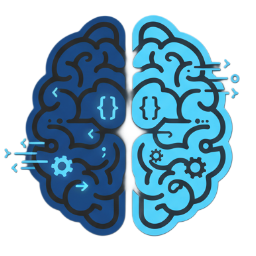How a bedtime story turned into a published book thanks to a thoughtful AI-driven workflow
AI is no longer an emerging technology—it’s everywhere. The market is saturated with tools and platforms promising to do everything from writing your code to generating images, music, or complete applications. But here’s a hard truth that many teams (and even experienced engineers) often overlook: the availability of AI doesn’t mean it’s ready to solve your problem—or any problem, for that matter.
As a Lead Software Engineer, I want to share a practical, real-world journey that shows what truly matters in AI-driven development: clear problem identification, careful tool selection, understanding the gap between prototyping and production, and knowing when to step aside and let others do the job better.
It All Starts with the Problem, Not the Tool
One of the most common mistakes I see in tech teams is this: adopting a tool just because it’s trending. We’ve all done it—signed up for the latest AI-as-a-service, connected it to Slack or Notion, and declared ourselves “AI natives.” But when you ask basic questions—What’s the actual problem you’re solving? Is this solution scalable? What’s the cost of ownership?—the conversation gets uncomfortably quiet.
If you’re serious about integrating AI into your workflow, the first skill to build isn’t prompt engineering—it’s problem identification.
Ask yourself:
- What repetitive or manual process could be automated?
- Where is human effort disproportionate to the outcome?
- What part of the workflow consumes time with little added value?
A Creative Case: Publishing a Children’s Book with AI
Let me bring this idea to life with a concrete project I completed recently: publishing a children’s storybook, written for my daughter and her preschool friends. While this wasn’t a “typical” IT project, it was a perfect testbed for exploring how AI can deliver value across an end-to-end creative and production pipeline.
Phase 1: From Voice to Text
For years, I had recorded improvised bedtime stories I told my daughter. The raw voice files were far from studio quality—background noise, inconsistent volume, and the natural rhythm of storytelling made traditional transcription tools struggle.
However, modern large language models (LLMs) were game-changers. AI tools easily transcribed the recordings with surprisingly good accuracy, even suggesting improvements when it detected inconsistencies or abrupt narrative shifts (common in spontaneous storytelling).
Phase 2: From Text to Visuals
Now I had the text, but good illustrations were essential. Hiring a professional illustrator wasn’t realistic for a small print run. So I tried several AI tools—ChatGPT to help outline visual scenes and descriptions, Whisk and Midjourney for visual generation, and Picsart for post-processing.
No single tool gave ideal results out of the box. Here’s what it took:
- Multiple versions per illustration (often 10–15),
- Manual edits, such as regenerating elements or adjusting proportions,
- Creative blending of outputs from different systems.
This wasn’t “lazy automation.” This was complex, exploratory design—with AI as a thought partner, not a final destination.
Phase 3: Professional Formatting
AI wasn’t involved in every step. For the final formatting, layout, and cover design, I turned to a skilled freelancer with DTP experience. This person knew how to produce materials suited for print-on-demand and Amazon KDP, making sure everything—from page margins to font selection—was professionally done.
You can check out the final result here:
Amazon – Animal Detectives
zwierzetadetektywi.pl/ourbooks
Going Global: Translation, Web & Social Strategy
Encouraged by the positive reactions from children and teachers, I translated the stories into English—with help from AI, of course. Translation quality was checked and refined using LLMs and automated grammar tools, offering clear and adaptive phrasing for young readers.
Then I launched:
- A small website (AI helped with module evaluations, but actual development was custom),
- Several social media profiles, with automated scheduling and distribution driven by platforms like n8n and Make.com—an area I’ll explore further in a future article.
AI-Powered Audiobooks and Music
Why stop at a printed book? With the same story material:
- I used AI-powered voice synthesis to generate engaging audiobooks with custom voices,
- Created podcast episodes, which now have over 200 regular listeners,
- Composed background music with AI composition tools, and distributed tracks to Spotify and 20+ streaming platforms—again, all generated and curated through a mix of tools and human iterations.
Prototyping vs. Production: A Crucial Distinction
Rapid prototyping is incredibly accessible today. Tools like V0.dev, Copilot Studio, or Windsurf let you build a working mockup in under 30 minutes—if you know what you’re doing.
But here’s what too many enthusiastic teams forget:
- A prototype is not a production system.
- Going live requires thoughtful architecture, security, observability, data handling, and cost analysis.
Don’t rely on the AI hype cycle alone. Think in systems. Build with intent.
Final Warnings: Privacy, Policy & Corporate Risk
If you work in a larger company or enterprise environment, remember this: AI technologies aren’t fully regulated, and their privacy policies are often fuzzy at best.
Before pasting documents or sensitive data into any AI model—assume it could be made public. Check your company guidelines (or be the one helping write them). Build guardrails, not just prototypes.
Key Takeaways for Leaders and Engineers
- Start with the problem – not the tool.
- Experiment and test regularly – free tiers on most platforms are enough to learn.
- Know your limits – pair AI with human skill, especially for tasks with high creative or technical stakes.
- Prototype fast, design slow – your MVP needs different thinking than your final product.
- Handle data responsibly – security and privacy must be foundational, not an afterthought.
“Using AI just because it’s available is like writing code just because you know a language. It’s not engineering — it’s noise.”
Take the time to understand both the challenge and the tools. When AI is used well, it’s not just faster—it’s smarter, more consistent, and scalable.
Bonus: You can watch and listen to a presentation created by NotebookML using my notes and article

